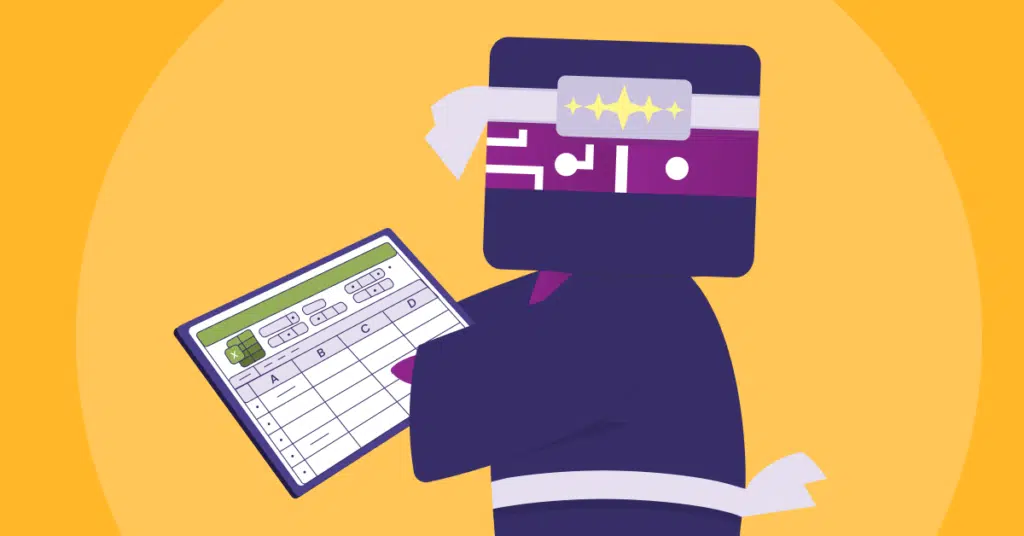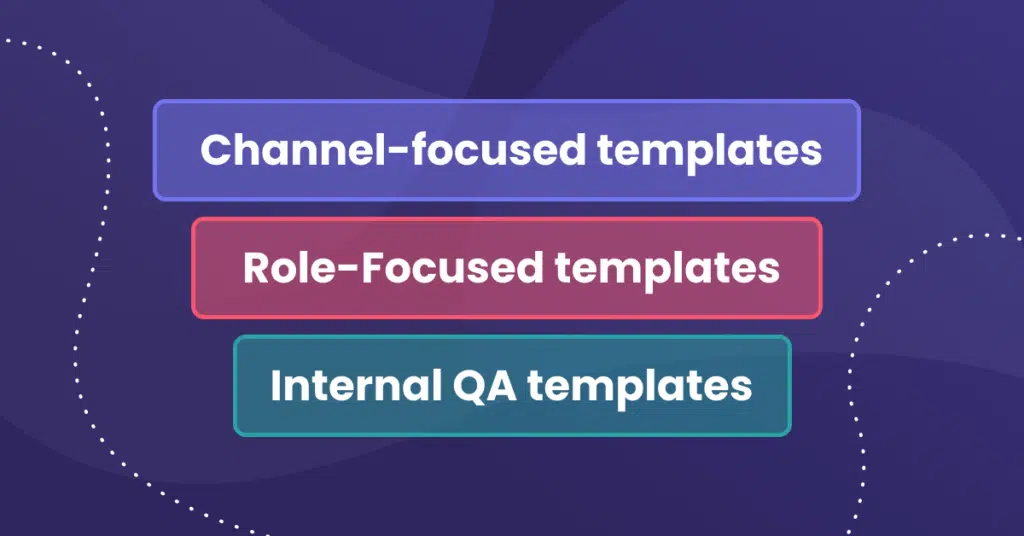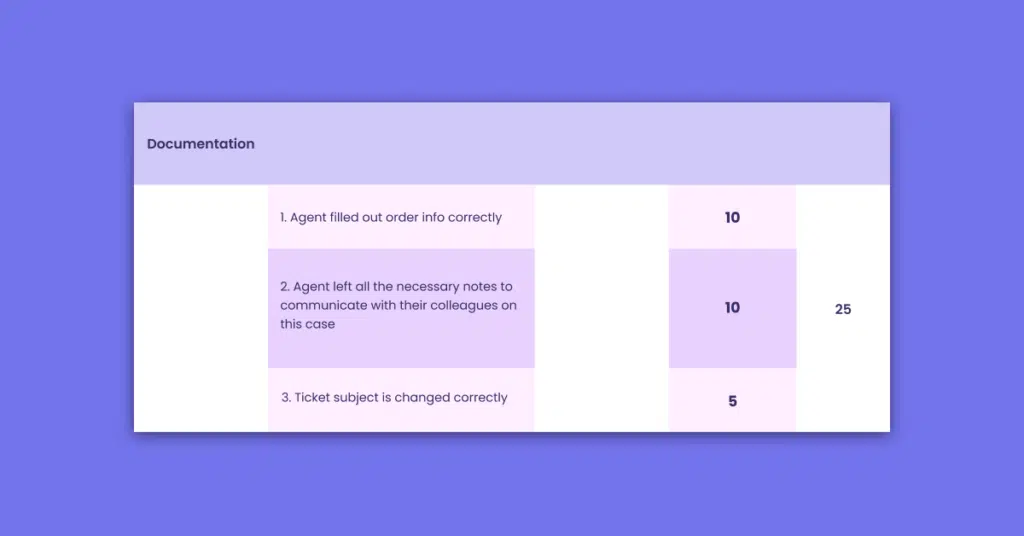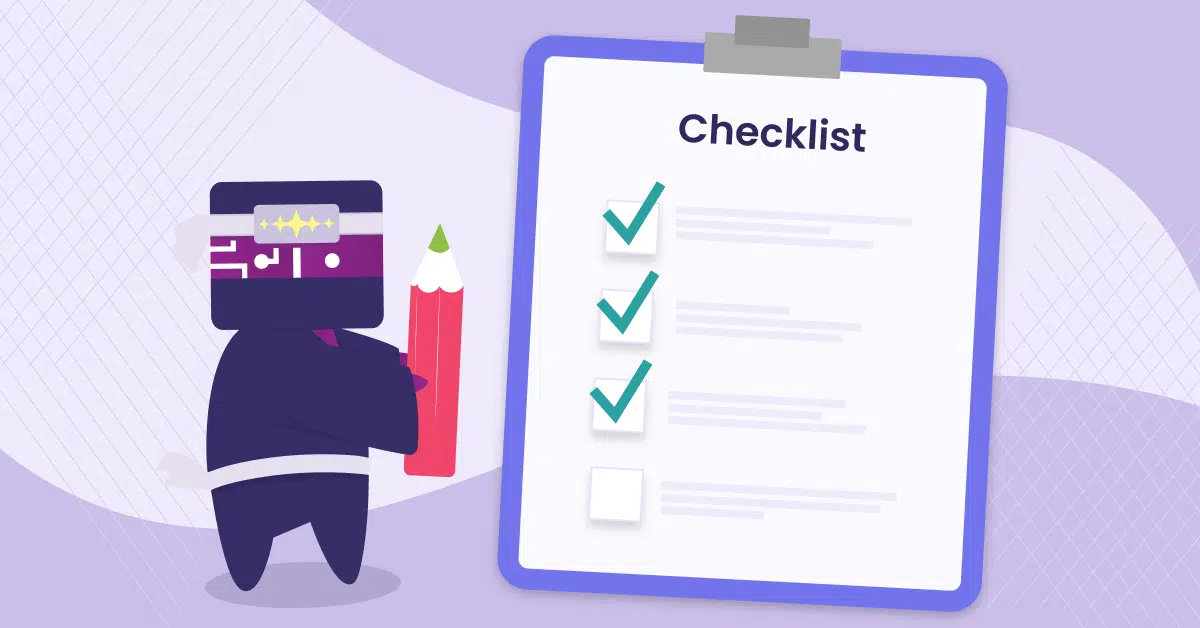Does your business use quality assurance (QA) Scorecards to manage agent performance?
Building an effective QA program requires a lot of planning upfront. QA experts have to think from the bottom up. How do the pieces of the QA process fit together? Does your rating system improve quality and do your agents know which criteria is most important to their success?
Using a call center Scorecard format to perform quality assurance may be just the thing you need to formalize your customer service operations.
So what’s all the hype about, you ask?
Stick around and find out!
What is a QA Scorecard?

Let’s go back to grade school, shall we?
You’re sitting in class looking at the writing assignment your teacher just handed back to you.
You got an 80/100, 10 points off for submitting a day late, and 10 points for forgetting to proofread.
The teacher grades her assignments on a 100-point scale but not all criteria for success are made equal. Your teacher will give 50 points for having a unique argument. 20 points for correct grammar, 5 points each for formatting and citations, and then 10 more points for proper submission.
Just like QA Scorecards, rubrics keep teachers organized, they introduce students to constructive criticism, while the quantitative format provides upper management with well-managed data for calculating trends in progress attainment.
At the end of the day, a QA Scorecard for call center agent quality assurance is simply an organized and collaborative method for evaluating agent performance.
Why do large support teams need to use a QA Scorecard format?
Wanting to delight customers is one thing. Actually having a system of checks and balances to ensure quality standards are followed is another. Gartner suggests that 88% of service leaders are unimpressed by their existing quality assurance processes.
So, what are their complaints?
- Quality assurance Scorecard template Excel spreadsheets are too time-consuming.
- Having one set of rating criteria for the entire call center doesn’t make sense.
- Agents can’t access their own performance data. That means they get no reassurance that their ratings are fair.
Finding success with QA Scorecards
For large-scale support center to have a resilient service structure, they need to keep these things in mind.
Take data-driven action with QA Scorecards
Call center quality Scorecard templates are helpful for a few reasons. Notably, with this format, data collection is simple.
When your data is organized – so are your results.
Using the QA Scorecard is a surefire way to evaluate your agents fairly. QA specialists can, then, create QA trend reports with credibility. Thus, making it possible to measure and compare agent performance quality. No more strange outliers from inconsistent criteria or forgotten QA fields.
So now, QA experts and Team Leads can do some problem solving.
This format benefits collaboration. With easy-to-read QA reports, Leads can work together to identify areas where an agent’s low scores are impacting overall CSAT, or other contact center metrics. Then, when managers have completed their comprehensive overviews, they can strategize how to boost call center QA for all!
This format just makes sense. Creating visibility for leadership is essential for developing effective and cost-friendly solutions like group training days!

And just like that – your leadership team has quit their QA guessing games and started thinking strategically about minimizing risk.
With QA Scorecards, comes organization
Keeping your support operations organized, predictable, and easily understandable is crucial to building strong teams and retaining talent.
As we all know, good leadership is based on clear communication. We cannot expect agents to know exactly what to do without giving them guidance. Even more important to note, it’s de-motivating for agents to be evaluated without being told their performance criteria.
We see far too many CS professionals having to work within a disorganized QA program, creating confusion for agents, Leads, and upper management alike. Using ad-hoc methods for evaluating service interactions can put your agents on edge.
Support agents have enough to deal with already. Having a disorganized workplace can make everything worse.

QA Scorecards keep your teams ready for change
Nothing is more reliable than a well-oiled machine – until it breaks down of course. Luckily, machines come with a manual!
Support centers with undocumented processes have difficulty growing their operations because all the information lives and dies with the employee who performs them. To be scalable and organized, trustworthy processes need procedures that are repeatable and easy to execute.
QA Scorecards lay the foundation for the creation of scalable checks and balances that eliminate this risk completely. Thus, building resilient service departments where leaders can strategize for future growth.
Now think:
- If I were to leave my position today, who can perform my responsibilities?
- Are the (Standard Operating Procedures) SOPs for quality assurance formally documented?
- Do agents have access to their own performance data?
- Is our business’s historical QA data organized for future analysis?
If the answer to any of these questions is no then you may fumble when your business hires additional frontline agents and Leads. Implementing a quality assurance call center quality monitoring Scorecard enables the documentation of key processes and clarity for agents.
Happy support team – Happy customers!
Support unique needs with custom QA Scorecards
CS professionals need to create systems that carefully balance standardization and flexibility. Luckily, this can be achieved.
Customization is a valuable feature to have in the QA process. With this, QA Leads can decide how quality is monitored across teams. Let’s look at a use case for adopting a QA Scorecard with customization features.
| Hypothetical Industry Use Case: Airlines |
QA context: This Hawaiian-based airline has a fleet of 200 airplanes that carry every-day Hawaiians to their schools, families, and businesses. Their slogan is “Getting your family to you!”
But unpredictable weather can make customers nervous and this means they receive at least 400 tickets a day from every channel they have — Twitter, Phone, Facebook, Whatsapp, and Live Chat.
Because of the high ticket volumes, the airliner has decided to hire 50 more agents, which means their service team has grown from 100 agents to 150. Many are young and inexperienced but they have a great connection with customers over social media. The other 100 have been around since the beginning. These agents enjoy talking to customers on the phone and even Whatsapp has proven useful!
QA challenge: Every business has different quality indicators. In this example, a missed call or an apathetic agent could have a significant effect on the customers’ experience.
Emotions can run wild in such a high-stakes situation. It can be easy for agents to get caught up in a customer’s emotions. So that means, this airliner’s QA Scorecard needs to monitor how their agents find appropriate solutions. You see, the way an agent responds to a customer’s issue matters. Keeping tabs on their activity is the only way to ensure your agents follow the rules.
How to set up a QA scorecard?
Every platform operates differently, but at Kaizo we think we’ve got this QA Scorecard thing down.
Here are the QA Scorecard set-up best practices for support teams to live by.
Step 1. Determine who this QA template is for
Creating a custom QA Scorecard for call center teams can help gather more accurate information about your agent’s service delivery. We have seen others succeed with creating a call center agent scorecard for each service channel or role on their support team.

Step 2. Create categories
These are key areas of quality service delivery. Typical categories include Introduction, Customer Engagement, De-Escalation Skills, and Accuracy of Content. Or perhaps, empathy is an important criteria for your agents to follow.
Pro tip: Hold a meeting with your fellow teammates. If you’re having trouble organizing your criteria under a single category, having someone new address the problem may help out! Remember, you are the experts here. Be sure to use the resources you have at your disposal!
Step 3. Develop criteria
This is where you get specific. The level of detail you want to put into your criteria is your choice. However, we recommend thinking strategically about your call center agent performance scorecard.
What mistakes do you consider non-negotiable criteria violations? When should an agent follow up with an unresolved ticket? Do your Team Leads want to know that every negative customer interaction is to be documented for future use?
Here’s what QA criteria could look like for documentation compliance:

Step 4. Describe criteria and categories
If your QA software allows it, take a moment to write a simple description for each of your criteria and categories. Maybe you can assume that “Agent Completed Order Information” is enough context for your agents. But what happens when you have new hires or need to outsource service during the holiday season?
Having a QA criteria description feature saves time and can also encourage agents to be self-sufficient in finding solutions. This is also a great opportunity to link to your company’s knowledge base for reference!
Step 5: Define total points
This is where you choose how to numerically rate your agents. It’s possible to rate them with increasing points for every successful criterion met or to deduct points when criteria are violated.
Remember, customer service Scorecards work best with whole numbers. Think back to the teaching metaphor we used earlier. Starting with or accumulating points up to 100 is a simple but effective way to define total points.
Step 6. Build your rating scales
Criteria are rated equitably not equally.
That means that when developing a call center agent performance Scorecard you get to choose what’s most important for your teams. Then, all you need to do is distribute the total points accordingly.
Step 6. Save and repeat!
You’re done! But a QA analyst’s work is never done.
Select to create another QA Scorecard with custom categories and criteria for your next team!
Conclusion
Now that you’ve set up your QA Scorecard, your team’s journey toward improvement begins!
Let Kaizo help you along the way. We have some amazing resources to help you keep your competitive edge. That means if you need extra support, we’ve got your back! Take a look at these QA E-books and let us know how they’ve helped.
Quality Assurance Templates For Brilliant Customer Service
Strategies To Improved Quality Assurance With Performance Coaching


